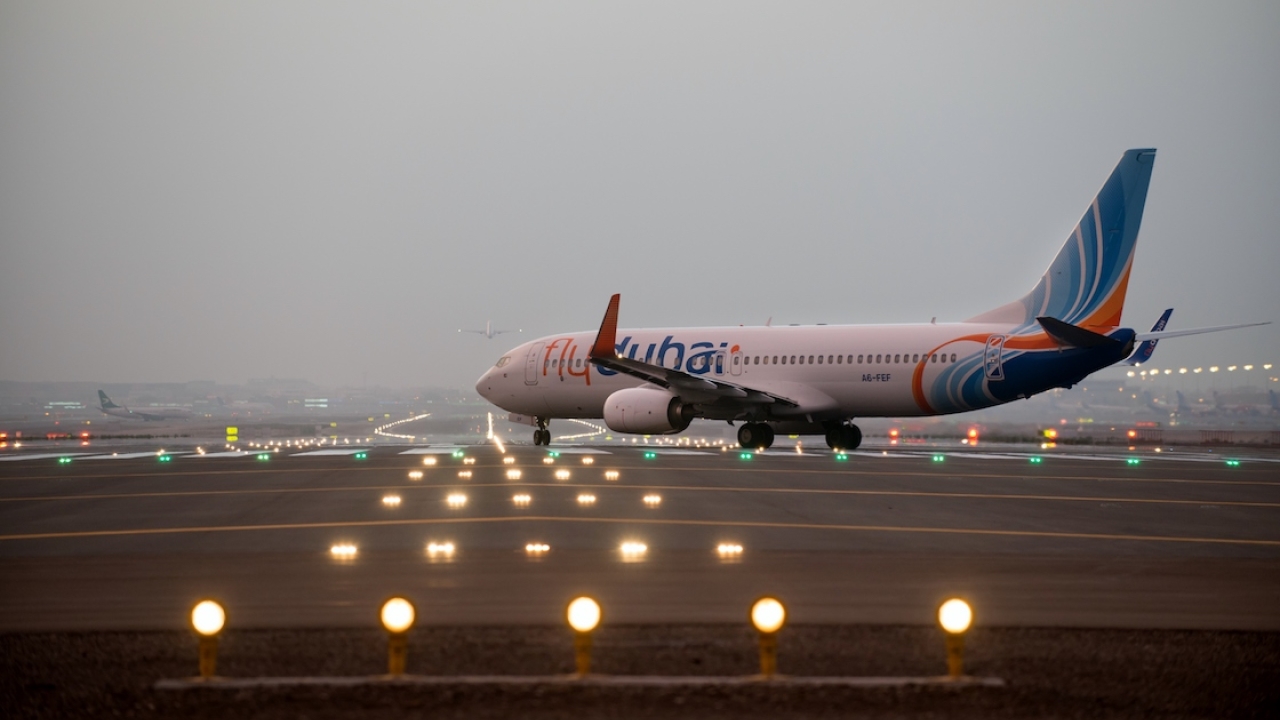Be prepared to weather the storms
From flooding to sandstorms and wildfires, extreme weather events linked to climate change are affecting airline operations with increasing frequency, disrupting schedules and reducing the performance of aircraft and engines. Tom Batchelor reports.

Things are hotting up: Airline crews operating out of Dubai International Airport are used to the heat, but scientists say climate change is increasing the frequency and intensity of extreme weather. Picture: Dubai Airports
Iraq has been hit hard by dust storms this year and, since June, vast swathes of Pakistan have been under water after heavier-than-normal monsoon rains – just two examples of meteorological phenomena that scientists say are likely to intensify.
The impact of climate change can also be more subtle, including altered wind patterns or precipitation. Warmer oceans increase the volume of water that evaporates into the air, leading to heavier rain or snow storms.
As a result, airlines are having to adapt, including by reconfiguring their training programmes to prepare crews for the increased intensity and frequency of such weather events.
Climate change guidance issued by the International Civil Aviation Organisation (ICAO) warns pilots may face a range of factors associated with the warming planet, including payload restrictions due to rising temperatures, an increase in clear air turbulence, and more dust storms, which could increase the presence of silicates in jet engines.
Heat buckling runways and taxiways, and even difficulty in cooling the cabin to an acceptable temperature for passengers and crew, also pose a challenge.
The ICAO states that training crews for this new reality “may have an initial financial cost, but by improving resilience, carriers may ultimately reduce overall financial costs”.
Indian carrier, Vistara, which has regular flights to Doha, Dubai and Sharjah, is among the airlines to have modified flight crew training syllabuses.
Captain Hamish Maxwell, the Delhi-based airline’s senior vice president, flight operations, said: “We take into account all sorts of factors, and climate change is absolutely one of those.
“The weather is changing all over the world, and we are training more for adverse weather where we need to. We see more convective weather and a lot more adverse weather in a lot of the regions that we fly to, although we’re not as affected as some other airlines.”
A combination of ground-based training and support from aircraft manufacturers is helping to close any potential skills gaps before they arise, Maxwell said. “We take advantage of simulator training, and the OEMs are able to offer us additional training capabilities, so we work with them to ensure that our pilots are as well trained as they possibly can be for the environments in which they are operating.”
Extreme heat, a particular problem in the Middle East, may mean that carriers are forced to adapt schedules, for example to ensure that larger aircraft can depart at cooler times, according to aviation analysts CAPA.
Training staff in “the use of meteorological data and in how to react during disruptions” is key, the organisation said.
Low-cost airline, Flydubai, said its operations department “continues to develop” training programmes to ensure its pilots are ready for current and future operating conditions.
A spokesperson said: “Flydubai has an extensive range of pilot training programmes that reflect industry best practices and exceed regulatory requirements. They cover adverse weather conditions and are based on simulator and evidence-based training modules (EBT) that we continuously review and develop.”
Complementing airline training, technology is also helping pilots operate safely in extreme environments. NAVBLUE, an Airbus company, has developed its RunwaySense service, which allows airlines and airports to assess and report runway conditions by using data from A320 and A330 family aircraft provided by the braking action computation function (BACF).
Airbus highlights South Asian airports, where monsoon conditions are projected to become “even more challenging in the future”, as having the potential to benefit most from the web-based platform.
Airlines are also using software such as CEFA aviation mobile services (AMS) – a mobile service that allows pilots to replay their own flights on a tablet after landing – to enhance crew awareness without needing to wait for recurrent training.
It is in use by major airlines in the Middle East and globally, including Emirates, Gulf Air and Qatar Airways.
Stay up to date
Subscribe to the free Times Aerospace newsletter and receive the latest content every week. We'll never share your email address.

